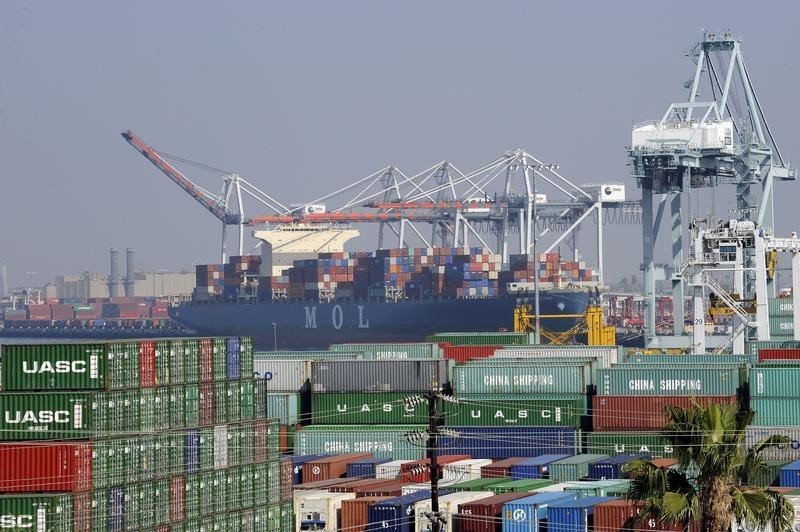By Lucia Mutikani
WASHINGTON (Reuters) - A gauge of U.S. business investment plans recorded its largest increase in just over a year in July, suggesting the United States was in good shape to withstand growing strains in the global economy.
The Commerce Department said on Wednesday non-defence capital goods orders excluding aircraft, a closely watched proxy for business spending plans, increased 2.2 percent last month, the biggest rise since June last year.
"The economy had a tailwind heading into the recent market rout. That tailwind will help to carry us through the turbulent waters that lie ahead," said Diane Swonk, chief economist at Mesirow Financial in Chicago.
July's increase in the so-called core capital goods orders was on top of an upwardly revised 1.4 percent increase in June and marked two straight months of hefty gains. Economists had forecast only a 0.4 percent rise in July after a previously reported 0.9 percent increase in June.
The report added to employment, industrial production, retail sales, housing and consumer spending data in highlighting the U.S. economy's resilience.
The string of upbeat reports suggests the Federal Reserve could still raise interest rates this year despite a global markets sell-off, triggered by worries over China's slowing economy, and policymakers' concerns about low inflation.
New York Fed President William Dudley said on Wednesday prospects of a September rate hike "seems less compelling to me than it was a few weeks ago."
Stocks on Wall Street rallied, with all major indices trading more than 1 percent higher. Prices for U.S. government debt fell, while the dollar rose against a basket of currencies.
DOLLAR, OIL PRICE DRAG
A strong dollar and deep spending cuts in the energy sector have undercut business investment.
Schlumberger Ltd (N:SLB), the world's No. 1 oilfield services provider and rival Halliburton (N:HAL) have slashed their capital expenditure budgets for this year following a more than 60 percent plunge in crude oil since June last year.
While Wednesday's report and recent data on oil drilling suggest the spending cuts in the energy sector were ebbing, renewed weakness in oil prices suggest a turnaround in business investment will only be gradual.
In addition, the dollar's 16.8 percent gain versus the currencies of the United States' main trading partners since June 2014 remains a challenge for multinational corporations such as Whirlpool Corp (N:WHR) and Procter & Gamble Co (N:PG).
Still, the surge in core capital goods orders in July bodes well for economic growth prospects in the third quarter.
"It points to a sharp acceleration in the pace of business capital investment activity in the third quarter and provides some upside risks to our expectation for growth," said Millan Mulraine, deputy chief economist at TD Securities in New York.
Shipments of core capital goods, which are used to calculate
equipment spending in the government's gross domestic product
measurement, rose 0.6 percent last month after an upwardly revised 0.9 percent increase in June.
Core capital goods shipments were previously reported to have risen 0.3 percent in June and the upward revision suggests second-quarter GDP could be bumped up when the government publishes it second estimate on Thursday.
June data on business inventories and construction spending have already suggested second-quarter growth could be revised to as high as a 3.4 percent annualised pace from the 2.3 percent rate reported last month. Third-quarter growth estimates are around a 2.8 percent rate.
A 4.7 percent increase in transportation equipment buoyed overall orders for durable goods - items ranging from toasters
to aircraft that are meant to last three years or more - which rose 2.0 percent in July.
Transportation was lifted by a 4.0 percent rise in orders for automobiles and parts, as automakers kept most assembly lines running during the summer instead of shutting them down for retooling. That increase offset a 6.0 percent decline in aircraft orders.
Unfilled orders for durable goods rose 0.2 percent in July, the largest gain since November, while inventories were unchanged.
